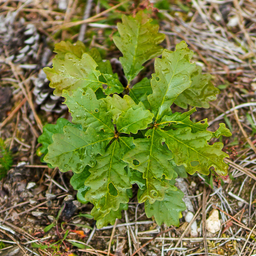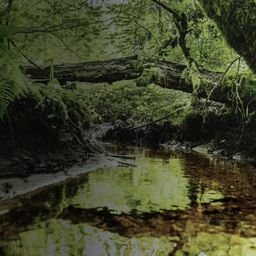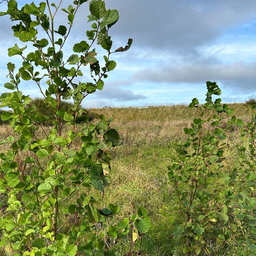Feb 15, 2022
One billion reasons why biodiversity is indispensable for the planet and for us
What is biodiversity and why is it important for us and our planet? Learn about ecosystem services, the economic value of biodiversity & what you can do to help.

Okay, we didn’t really count them. But the benefits of healthy biodiversity are so numerous, it’s almost impossible to count them. Yet, loss of biodiversity is accelerating and increasingly harming not only the planet, but human well-being and economy as well. Let’s look at what exactly biodiversity means, the different ecosystem services it provides, and what its value would be if we looked at it from an economic perspective. And last but not least, what you can do to help support biodiversity.
What is biodiversity?
Biodiversity or biological diversity means “the variability among living organisms from all sources, including terrestrial, marine and other aquatic ecosystems and the ecological complexes of which they are part; this includes diversity within species, between species and of ecosystems" (Article 2, Convention on Biological Diversity (CBD)).
More concretely, this entails all living organisms on Earth: microorganisms, fungi, plants and animals, as well as their habitats and communities. It encompasses three levels: from genetic diversity (meaning the variety of genes within species), over species diversity, to ecosystem diversity.
Why is biodiversity important?
Healthy biodiversity provides a lot of so-called ecosystem services: free, natural benefits for all human beings.
According to the Millennium Ecosystem Assessment, we can divide these services into four categories:
- Provisioning services: All the products they provide us with, such as fresh water, food, medicinal resources, wood and other construction materials, fuel, fiber and other goods
- Regulating services: The natural processes regulating diseases, floods, climate, water, and waste
- Supporting services: The support of other ecosystems, such as photosynthesis, nutrient storage and cycling, soil formation and protection.
- Cultural services: Non-material benefits such as recreation, tourism, relaxation, education, aesthetic enjoyment and cultural heritage.
As these ecosystem services are all free, they usually don’t get any economic value put on them. Another reason ecosystem services are undervalued is the fact that their benefits are felt differently by people depending on time and place. Benefits or costs that go beyond the immediate geographic area, or that are long-term, often get ignored.
However, to understand and explain the benefits and costs of (not) doing anything to protect biodiversity, it’s very useful to analyze its economic value.
This is why the UN and many European governments supported The Economics of Ecosystems and Biodiversity (TEEB), a large-scale international study.
This video shows Pavan Sukhdev explaining why it’s so important to put an economic value on nature, and how that works:
If you want to deep dive in the valuation of ecosystems, here’s an interesting, clear video series explaining the different ways of valuation:
Different interests, different visions on biodiversity
Depending on people’s interests, they will have a different vision on biodiversity and its value.
First of all, genetic diversity and species diversity matter to farmers, fishermen and beekeepers as they’re necessary for a good harvest, the production of milk and meat, pest control, fish, pollination and honey production.
Second: species diversity matters to nature lovers, the pharmaceutical industry, ethnobotanical experts, and forestry companies like EcoTree as it allows people to observe and enjoy nature, to protect and share traditional knowledge and cultural heritage, to discover new medicines, and to produce timber and other wood products.
And finally, ecosystem diversity matters to children and families, communities, and travel agencies as it provides a healthy place to connect, relax, walk and play, it protects the quality of water supplies, and supports tourism.
How can you support biodiversity?
We hope this article convinced you of the importance of biodiversity for the planet, for animals and for human beings. Now, you might wonder what you can do to help foster biodiversity.
1. Support a biodiversity project
At EcoTree, biodiversity is at the heart of our forestry. You can support several biodiversity projects in our forests, and we’re adding more as we speak. Supporting one of our biodiversity projects is one thing you can do to actively make an environmental impact today.
2. Plant trees
If you plant a tree with us, you indirectly support biodiversity as well. You can read more on how EcoTree helps you make a difference in this blogpost.
3. Spread the word
Another thing you can do to help is sharing this article on social media. Education on environmental subjects is the key to success. If public awareness increases, people will become more and more involved, which will impact who represents them in the government. And that’s how nature can be protected.
4. Live sustainably
Other than supporting a biodiversity project or sharing this article, you can make a difference by choosing a sustainable lifestyle, fighting litter, purchasing sustainable products, reducing your carbon footprint, or supporting national parks.











